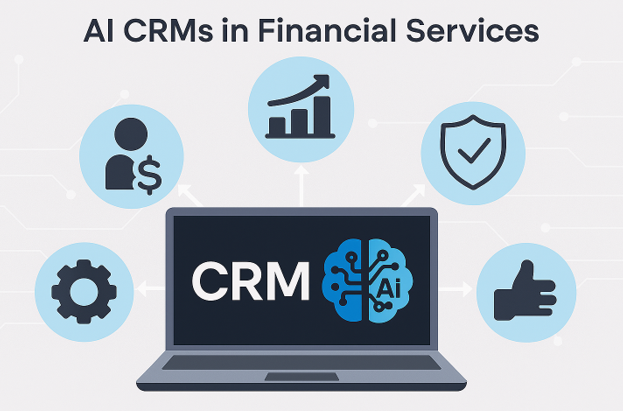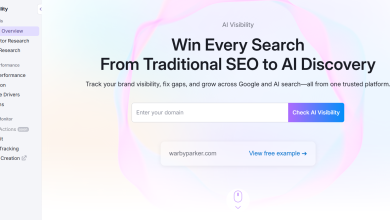
Introduction
Financial institutions are undergoing a profound transformation in how they manage customer relationships. Traditional CRM systems, once static repositories of client data, are evolving into dynamic, AI-powered platforms that deliver real-time insights and proactive engagement. This shift is driven by the need for hyper-personalisation, operational efficiency, and regulatory compliance in an increasingly competitive market.
Recent industry research underscores this momentum: nearly 50% of financial organisations have already implemented generative AI or large language models, while over 90% are actively exploring AI applications across their operations. These figures highlight a clear trend – AI is no longer a future aspiration; it is a present-day imperative for financial services.
Why AI CRMs Are Gaining Popularity
The popularity of AI-driven CRMs stems from three converging forces:
- Data Explosion: Financial institutions now manage vast volumes of structured and unstructured data, from transaction histories to behavioural signals. Traditional CRMs struggle to synthesise this data into actionable insights.
- Advances in AI Models: The rise of generative AI and large language models enables CRMs to move beyond static reporting to predictive and prescriptive analytics.
- Customer Expectations: Clients demand personalised, seamless experiences across channels. AI CRMs empower institutions to anticipate needs and deliver tailored solutions in real time.
These factors collectively make AI CRMs indispensable for banks, insurers, and wealth managers seeking to differentiate themselves in a crowded marketplace.
Treatment of Data and Evolving Regulations
The adoption of AI CRMs is not just a technological shift; it is also a regulatory challenge. Financial institutions operate under stringent compliance frameworks, and the integration of AI introduces new considerations around data privacy, fairness, and explainability.
– EU AI Act: Introduced in 2024, this legislation classifies AI systems by risk levels and imposes strict obligations on high-risk applications, including those influencing credit decisions or customer profiling.
– UK FCA and PRA Guidance: Regulators emphasise proportionality, governance, and consumer outcomes. Recent FCA research highlights the importance of explainability in AI-assisted decisions.
– Global Frameworks: Standards like NIST’s AI Risk Management Framework provide practical guidance for embedding trustworthy AI principles into CRM systems.
Institutions that proactively align with these frameworks can accelerate adoption while minimising compliance risks.
What Makes an AI CRM Different from Traditional CRMs
Unlike traditional CRMs that primarily serve as systems of record, AI CRMs function as systems of intelligence. Key differentiators include:
– Predictive and Generative Capabilities: AI CRMs analyse historical data to forecast customer needs and generate personalised recommendations.
– Next-Best Action Guidance: Relationship managers receive real-time alerts for cross-selling, upselling, or risk mitigation.
– Omnichannel Orchestration: AI CRMs synchronise interactions across marketing, sales, service, and compliance, ensuring consistency and relevance.
As an example, a wealth manager preparing for a client meeting can access an AI-generated briefing that consolidates portfolio performance, recent interactions, and personalised investment ideas, saving hours of manual preparation.
Where Value Is Emerging
AI CRMs deliver measurable benefits across multiple domains:
– Relationship Management: Personalised insights help bankers and advisors deepen client engagement and identify new revenue opportunities.
– Contact Centres: AI copilots summarise calls, suggest compliant responses, and retrieve knowledge instantly, reducing average handling time and improving first-contact resolution.
– Compliance and Client Lifecycle Management (CLM): Integrating CRM with KYC/AML systems accelerates onboarding, centralises documentation, and enhances audit readiness.
Many banks and institutions are reporting a reduction of over 20% in onboarding time and an increase of over 15% in cross-sell opportunities after deploying AI-enhanced CRMs integrated with CLM workflows.
Agentic AI: From Assistance to Autonomy
The next frontier in CRM evolution is agentic AI, i.e. systems capable of executing multi-step tasks with minimal human intervention. Unlike today’s copilots, which assist with discrete actions, agentic AI can:
– Draft personalised outreach emails.
– Update client records across multiple systems.
– Schedule follow-up meetings and trigger workflows.
While this promises significant efficiency gains, it also raises governance challenges. Institutions must implement robust controls, including human-in-the-loop oversight, audit trails, and escalation protocols, to ensure responsible deployment.
Data Foundations for AI CRMs
AI systems including CRMs are only as effective as the data that powers them. Key principles for building strong data foundations include:
– Unified Customer View: Consolidate data from CRM, marketing, service, and compliance systems to create a single source of truth.
– Privacy by Design: Embed consent management, data minimisation, and role-based access controls into system architecture.
– Data Quality and Lineage: Ensure accuracy, completeness, and traceability (auditability) to support both operational performance and regulatory compliance.
Measuring Impact and Demonstrating ROI
Early adopters of AI CRMs report tangible benefits within weeks, not years. Common metrics include:
– Productivity Gains: Relationship managers can save up to 30% of the time previously spent on manual data gathering and reporting.
– Customer Satisfaction: AI-driven personalisation improves Net Promoter Scores (NPS) and retention rates.
– Revenue Growth: Targeted recommendations and next-best-action insights can drive higher conversion rates and wallet share.
A Pragmatic Roadmap for Adoption
To maximise value and minimise risk, institutions should follow a structured approach:
- Start with Low-Risk, High-Impact Use Cases: Meeting preparation, call summarisation, and email drafting are ideal entry points.
- Establish Governance Frameworks: Define policies for data handling, retention, model monitoring, and human oversight.
- Pilot and Scale: Launch controlled pilots, capture learnings, and expand successful patterns across business units.
- Invest in Change Management: Equip employees with training and tools to build trust and adoption.
Common Pitfalls to Avoid
– Siloed Implementations: Treating CRM and CLM as separate systems will lead to inefficiencies and compliance gaps.
– Rushing to Autonomy: Deploying agentic AI without robust controls can result in regulatory breaches and reputational damage.
– Neglecting Data Quality: Poor data undermines AI accuracy and erodes customer trust.
The Outlook
AI CRMs are rapidly becoming the backbone of customer engagement in financial services. As agentic AI matures, these platforms will evolve from assistive tools to cognitive collaborators, enabling employees to focus on high-value, judgment-intensive tasks. Institutions that balance innovation with governance will not only enhance customer experience but also secure a sustainable competitive advantage.





